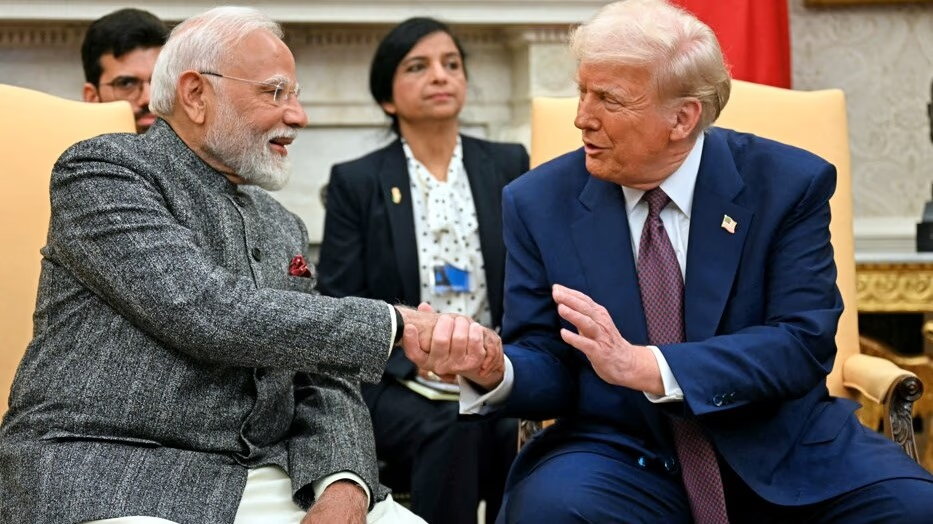U.S. President Donald Trump has announced significant tariffs on three major trading partners: China, Mexico, and Canada. Imports from Mexico and Canada now face a 25% tariff, while tariffs on all Chinese imports have doubled to 20%. This move aligns with the Trump administration's policy to curb the smuggling of fentanyl and its chemical components by pressuring these nations.
This decision has stirred turmoil in the global trade market, with experts predicting the onset of a new trade war. As products from these countries become more expensive in the U.S. market, demand could decrease, granting Indian exporters an advantageous opening.
A Golden Opportunity for Indian Exporters!
Experts suggest this decision presents a significant opportunity for Indian exporters. The reduced grip of China, Mexico, and Canada on the U.S. market could benefit several Indian sectors, including agriculture, engineering goods, machine tools, apparel, textiles, chemicals, and leather industries.
With the increase in tariffs making products from affected countries pricier in the U.S. market, they may become less competitive. Indian exporters should seize this opportunity to broaden their reach. For instance, any price hike in Mexican avocados or Chinese electronics could lead to increased demand for Indian alternatives.
India Triumphed Before
This isn't the first time higher U.S. tariffs have favored India. During Trump's first term, similar high tariffs on Chinese imports benefited India, which ranked fourth among countries that capitalized on the opportunity. Back then, Indian exporters increased their foothold in U.S. markets dominated by Chinese influence.
With similar circumstances arising again, India has a chance to leverage the situation and introduce its products amidst expensive goods from other nations. Economic think-tank GTRI believes current tariffs could boost Indian exports and incentivize U.S. companies to invest in India, bolstering the manufacturing sector and initiatives like 'Make in India.'
India to Emerge as 'Champion' in Trade War?
GTRI cautions that the U.S. move might deepen the global trade confrontation. China has already announced retaliatory tariffs, adding 10-15% extra charges on U.S. agricultural products. Canada too plans a 25% tariff on $20.7 billion worth of U.S. imports, while Mexico has indicated its intent to respond.
This exchange offers India significant benefits. According to GTRI, U.S. companies may now look towards nations unaffected by the trade tensions, with India as a compelling choice. Moreover, high tariffs on Chinese goods could enable India to strengthen its manufacturing and play a pivotal role in the global supply chain.
Caution with FTAs
While these developments favor India, experts stress caution in negotiating any Free Trade Agreement (FTA) with the U.S. GTRI notes that although Trump replaced the North American Free Trade Agreement (NAFTA) with USMCA, he's now displeased with his arrangement, marked by tariffs on Mexico and Canada. This reflects the Trump administration's unpredictable approach to trade agreements.
The U.S. demands reductions in tariffs, opening government procurement, reducing agricultural subsidies, easing patent rules, and allowing data flow—a stance India has historically opposed. GTRI suggests India should propose a 'zero-for-zero tariff' deal, eliminating tariffs on industrial products for mutual benefit and safeguarding India's interests.
What Should India Do?
This opportunity comes with challenges, as tariffs have increased U.S. prices affecting Indian exporters. Already, U.S. retailers 'Target' and 'Best Buy' have hinted at price hikes. Moreover, retaliatory actions by countries like Canada and Mexico might impact global trade and economy.
Indian exporters need to act swiftly to capitalize on this situation. The government should work on strengthening supply chains, enhancing production, and focusing on U.S. market marketing efforts. It is also crucial to liberalize policies to attract investment. Trump's tariff decision presents a historical opportunity for India. If Indian exporters and the government adopt the right strategies, they could not only increase their U.S. market share but also emerge as a formidable force in global trade.




